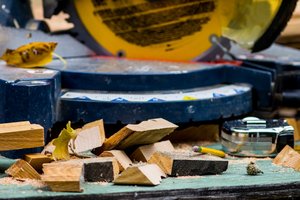Why 45-Degree Angle CNC Turning Matters
In precision machining, 45-degree angles are common in chamfers, bevels, and complex geometries for components like hydraulic fittings, aerospace parts, and automotive assemblies. However, machining these angles efficiently while maintaining tight tolerances presents unique challenges.
🔧 Key Challenges in 45-Degree Angle CNC Turning:
– Tool Deflection & Chatter: Angled cuts increase lateral forces, risking poor surface finish or dimensional inaccuracy.
– Workpiece Stability: Thin-walled or asymmetrical parts may vibrate, leading to errors.
– Tool Wear & Selection: Standard inserts may not provide optimal performance for angled cuts.
– Chip Evacuation: Poor chip control can lead to re-cutting and tool damage.
✅ Solution: Using high-rigidity tool holders, specialized inserts, and adaptive machining strategies can mitigate these issues.
Best Practices for Precision 45-Degree Angle Turning
1. Tool Selection & Geometry
- Use Diamond or Trigon Inserts: These provide stronger cutting edges for angular machining.
- Positive Rake Angles: Reduce cutting forces and improve chip flow.
- Custom Tool Holders: Anti-vibration tool holders minimize deflection.
📊 Recommended Insert Types for 45° Turning:
| Insert Type | Best For | Advantages |
|---|---|---|
| Diamond (CBN/PCD) | Hard materials (e.g., steel, titanium) | High wear resistance |
| Trigon (Wiper) | Finishing cuts | Smoother surface finish |
| Round Inserts | General-purpose chamfering | Versatile, reduced notch wear |
2. Optimizing Cutting Parameters
- Reduced Feed Rates: Prevent tool deflection in angled cuts.
- Higher Spindle Speeds: Improve surface finish but balance with tool life.
- Climb Milling (When Applicable): Reduces tool pressure for better accuracy.
3. Workholding & Fixturing Solutions
- Tailstock Support: Prevents workpiece flexing in long parts.
- Custom Jigs: Secure irregularly shaped components for stability.
- Live Tooling (If Using a Mill-Turn Machine): Enables multi-axis precision without repositioning.
Advanced Techniques for Complex 45° Features
📌 Multi-Axis CNC Turning
For intricate parts, Y-axis or B-axis CNC lathes allow dynamic tool positioning, eliminating secondary operations.

📌 Trochoidal Toolpaths
- Reduces Heat & Tool Wear: By maintaining consistent engagement.
- Improves Chip Evacuation: Prevents chip buildup in tight angles.
📌 Laser-Assisted Machining (For Hard Materials)
Pre-heating the cutting zone reduces tool stress when machining hardened steels or superalloys.
Real-World Applications & Case Studies
✅ Aerospace Component Example:
– Challenge: Machining a 45° titanium flange with ±0.005″ tolerance.
– Solution: Using a PCD insert with high-pressure coolant improved tool life by 40%.
✅ Automotive Hydraulic Fitting:
– Challenge: Deburring a 45° internal chamfer without manual finishing.
– Solution: A custom chamfering tool with automated deburring cycles reduced cycle time by 25%.
Final Takeaways for Your Next Project
🔹 Prioritize Rigidity: Use anti-vibration tooling and stable workholding.
🔹 Optimize Tool Geometry: Diamond or trigon inserts excel in angular cuts.
🔹 Leverage Multi-Axis Machining: For complex parts, reduce setups with live tooling.
🔹 Monitor Tool Wear: Adjust feeds/speeds based on material hardness.
By implementing these strategies, your CNC turning operations can achieve higher precision, efficiency, and cost savings on 45-degree angle features.
Need expert assistance on your next CNC turning project? [Contact our team] for tailored machining solutions.
